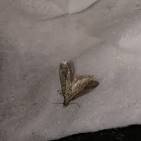Introduction to Moth Allergy and Envenomation
Moth allergy and envenomation affects many people worldwide, caused by moth scales, dust, or caterpillar toxins. Understanding the risks, symptoms, and preventive measures is key to protecting your health.
Internal Link: See our Guide to Common Household Allergens for more on managing indoor triggers.
How Moths Cause Allergic Reactions
Moth Dust and Body Scales as Allergens
Moth scales and dust can become airborne, leading to respiratory and skin reactions.
Symptoms of Moth Allergy
- Respiratory: Sneezing, wheezing, coughing, shortness of breath
- Skin: Itching, redness, hives (“moth rash”)
- Eyes: Irritation and watery eyes
Internal Link: Check our Preventing Insect Allergies at Home page for cleaning tips.
High-Risk Moth Species
- Tiger Moths (Asota caricae): Cause systemic allergic reactions and lepidopterism
- Oak Processionary Moths: Caterpillar hairs trigger skin and respiratory reactions
- Other Insects: Related species like caddis flies and chironomid midges also contribute to allergic responses
Image with keyphrase alt text:

Caterpillar Envenomation and Health Risks
What is Erucism?
Erucism occurs when caterpillar spines inject toxins, causing pain, swelling, or systemic symptoms.
Notable Toxic Caterpillars
- Puss Moth (Megalopyge opercularis) – painful stings in North America
- Lonomia obliqua – severe hemorrhagic syndrome in South America; requires specific serum
- African Silkworm (Anaphe venata) – can cause thiamine deficiency
- Pine Processionary Caterpillar (Thaumetopoea pityocampa) – causes skin and occupational reactions
Internal Link: For more, see Managing Outdoor Insect Hazards.
Image with keyphrase alt text:

Populations Most at Risk
- Individuals with genetic predispositions
- People with asthma or COPD
- Occupational exposure: insect farmers, beekeepers
- Children and outdoor workers
- Residents in outbreak-prone regions
Internal Link: Learn about High-Risk Groups for Insect Allergies.
Diagnosis of Moth Allergy and Envenomation
Common Diagnostic Methods
- Skin Prick Tests (SPT) for immediate hypersensitivity
- IgE antibody detection using CAP, ISAC, or Immunoblot
- Mast cell tryptase measurement after exposure
- Double-blind placebo-controlled food challenge (DBPCFC)
- Detailed patient history
Outbound Link: American College of Allergy, Asthma & Immunology
Preventing Moth Allergy and Envenomation
Minimize Indoor Exposure
- Store clothes in airtight containers
- Regular cleaning and vacuuming
- Use moth traps and keep windows closed
Personal Protective Measures
- Wear long-sleeved shirts, long pants, gloves, and eye protection
- In high-risk areas, use tight-fitting respirators
Environmental Management
- Monitor caterpillar populations
- Prune host plants and trees to reduce infestations
Internal Link: See Insect Prevention Strategies for outdoor management tips.
Managing Moth-Related Health Issues
Supportive and Emergency Care
- Pain relief: topical anesthetics, analgesics
- Antihistamines: reduce itching and hives
- Respiratory support: nebulized beta-agonists or steroids
- Epinephrine: for severe allergic reactions or anaphylaxis
Specialist Consultation
- Toxicologist for caterpillar stings
- Hematologist for Lonomia envenomation
Immunotherapy

- Gradual desensitization for chronic allergies
Outbound Link: WHO Guidelines on Venomous Caterpillars




